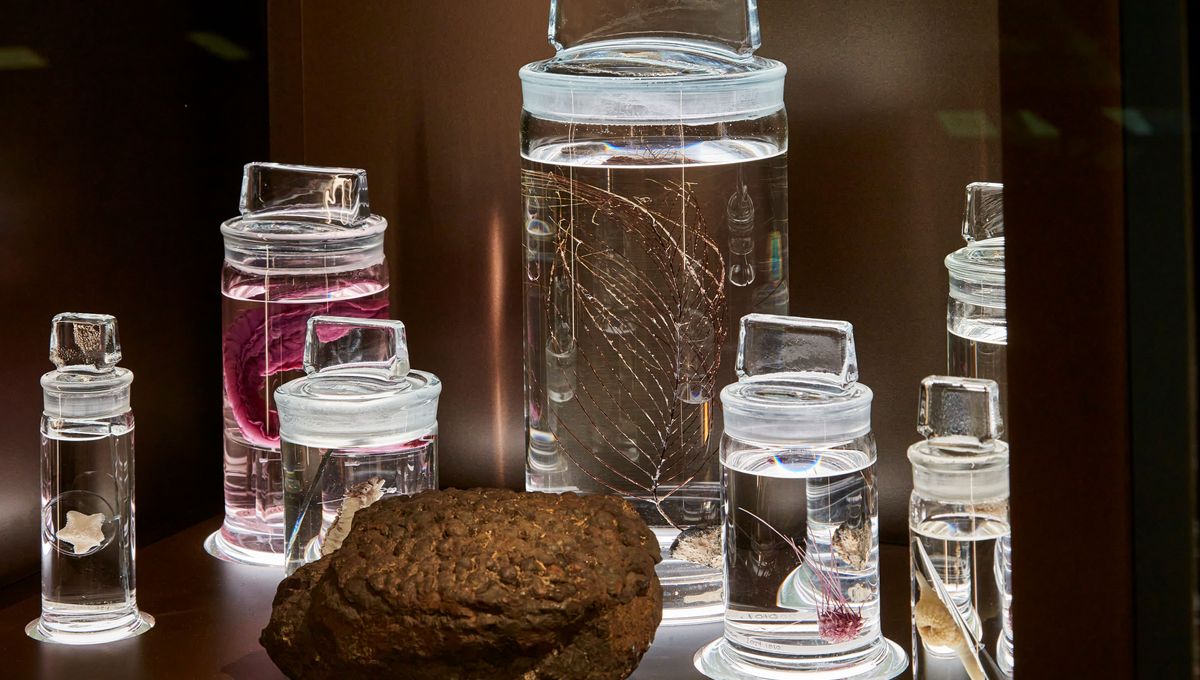
The ocean may be the most common environment on the planet, but we know surprisingly little about it, particularly at its deepest, darkest depths. Scientists are now seeking to rectify that, plunging thousands of meters below the surface to explore the otherworldly environment and the unusual organisms that inhabit it.
Among them is Dr Adrian Glover, a deep-sea researcher at the Natural History Museum, London, whom we caught up with when we visited the museum’s new permanent gallery, Fixing Our Broken Planet, to find out more about this unique ecosystem and why it needs protecting.
What is the Clarion-Clipperton zone?
Up to 5,000 meters (16,404 feet) beneath the Pacific Ocean lies the Clarion-Clipperton zone (CCZ) – a 4.5 million square-kilometer (1.7 million square-mile) patch of sea floor that spans from Mexico to Hawai’i.
It’s cold, dark, with limited food sources, and yet it’s teeming with life – from sea cucumbers to corals – examples of which can be seen in the new gallery.
Deep-sea mining in the Pacific
As well as playing host to a horde of weird and wonderful deep-sea creatures, the CCZ contains vast fields of metal-rich “deep-sea potatoes” and, as such, is something of a hotspot for deep-sea mining.
“In the 1960s, scientists went out there and took images of the sea floor and said, ‘Oh my goodness, there’s all of these trillions of little nodules sitting on the seabed’. And they quite quickly realized that this is potentially a commercial resource,” Glover told us.
“They’re rich in cobalt, nickel, manganese, some other minerals as well. And nowadays, the manganese is [of] less interest, but the cobalt and nickel are of interest, particularly for battery metals.”
On the one hand, these minerals are a valuable resource, and mining them for use in rechargeable batteries is becoming increasingly important, especially as we look to move away from fossil fuel use.
But on the other, we’re not exactly sure what impact mining the seafloor might have on the environment and the species that call it home, or how long these effects could linger. Some fear that mining will inevitably harm the ecosystems found there and cause significant damage to marine habitats.
That’s where researchers like Glover come in.
“Good evidence is needed on the biodiversity and on the environmental impacts that would happen so that society, if you like, can make an informed decision going forward. And that’s where we sit as scientists in the debate,” he explained. “There are many voices opposed and many voices in favor, but we sit in the middle and effectively, try and provide evidence and information.”
Just last month, for example, Glover and colleagues published research on a patch of the CCZ that was mined as part of an experiment back in 1979, hoping to learn more about the long-term impacts of deep-sea mining.
“The most striking observation is that the tracks made by the mining machine 44 years ago look almost as if they were made yesterday,” Glover told IFLScience’s Rachael Funnell at the time. “This was not unexpected in a way. We know that biological processes in the deep sea are quite slow.” The team found that he numbers of many animals were reduced within the tracks, but it wasn’t all bad news; there were also some signs of biological recovery.
“What is interesting is that animal life has actually started to recolonise the mined area. Our data provide the first evidence of the timescale of that process in the main deep-sea mining region of the Pacific,” Glover added.
Ultimately, though, more research is needed to finally put the global deep-sea mining debate to bed.
According to Glover, “a broader and perhaps more critical question, which we don’t have the answer to yet, is, what’s the risk of biodiversity loss and actual extinctions?”
“For that, we need to have better information on the taxonomy, describe the species, have the knowledge of their species ranges, and where else they might exist.”
Protecting biodiversity in the deep sea
As things stand, Glover told us, “there would be perhaps mining allowed, but with set aside areas that are protected. So we need to know are those set aside areas representative of the biodiversity in the mined areas, and then we can say loss of biodiversity should be minimized.”
And it’s vital that we do take steps to protect the biodiversity of the abyss, because who knows what could be down there? The depths of our oceans could be harboring medicines, natural resources, and even more bizarre beasties than we realized. The deep sea also contributes to the overall health of ocean ecosystems and has a major role in climate change mitigation, meaning harm to it can be felt across the planet.
Protecting biodiversity, even if we don’t know how useful it might be, is imperative, Glover highlighted.
“We don’t know, for example, whether these animals are going to provide useful compounds, some chemicals that might have anti-cancer properties. We haven’t studied whether the microbes in the sediments of the deep sea might have bacteria which have antimicrobial properties that could be useful for antibiotics.”
However, “it’s [incumbent] upon us to protect biodiversity where we can. We have to balance that against the needs of feeding ourselves, and providing medicines, and all the things we need as humans. We can’t say these animals will provide food on your plate, or the cure of the cancer, but these things, they might do in the future. So this is why we need to protect biodiversity now.”
Source Link: How Does Deep-Sea Mining Impact The Environment? We Met A Researcher Trying To Find Out